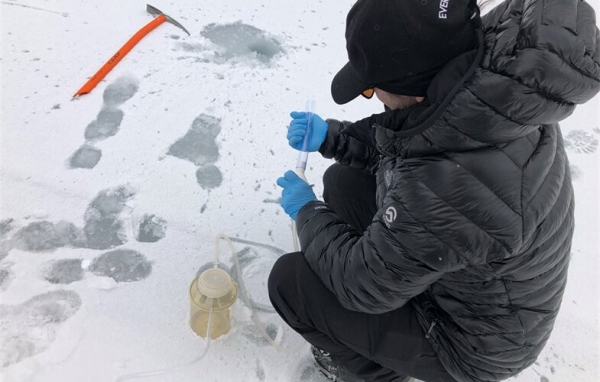A team of scientists led by the Wildlife Conservation Society (WCS) and Appalachian State University used environmental DNA (eDNA) to document the breadth of high-alpine biodiversity present on Earth’s highest mountain, 29,032-foot Mt. Everest (8,849 m). This critical work is part of the groundbreaking 2019 National Geographic and Rolex Perpetual Planet Everest Expedition, the most comprehensive single scientific expedition to the mountain in history.
Describing their findings in the journal iScience, the team collected eDNA from water samples over a four-week period in ten ponds and streams between 14,763 feet (4,500 meters) and 18,044 feet (5,500 meters). The sites included areas of the alpine zone that exist above the tree line and contain an array of flowering plants and shrub species, along with the aeolian zone that reaches beyond the range of flowering plants and shrubs at the uppermost reaches of the biosphere. From just 20 liters of water, they identified organisms belonging to 187 taxonomic orders, which corresponds to 16.3 percent, or one sixth, of the total known orders across the tree of life – a family tree of Earth’s biodiversity.
eDNA searches for trace amounts of genetic material left behind by organisms and wildlife and offers a more accessible, rapid, and comprehensive approach to increasing survey capacity for assessing biodiversity in aquatic environments. Samples are collected using a sealed cartridge containing a filter that captures genetic material that is later analyzed at a lab using DNA metabarcoding and other sequencing methodologies. WCS has been using eDNA for detection of rare and threatened species from humpback whales to Swinhoe’s softshell turtle, one of the rarest species on the planet.
Although the Everest study focused on identification at the order level, the team was able to identify many organisms to the genus or species level.
Read more at Wildlife Conservation Society
Image: Tracie Seimon collecting eDNA sample (CREDIT: Anton Seimon/National Geographic)


